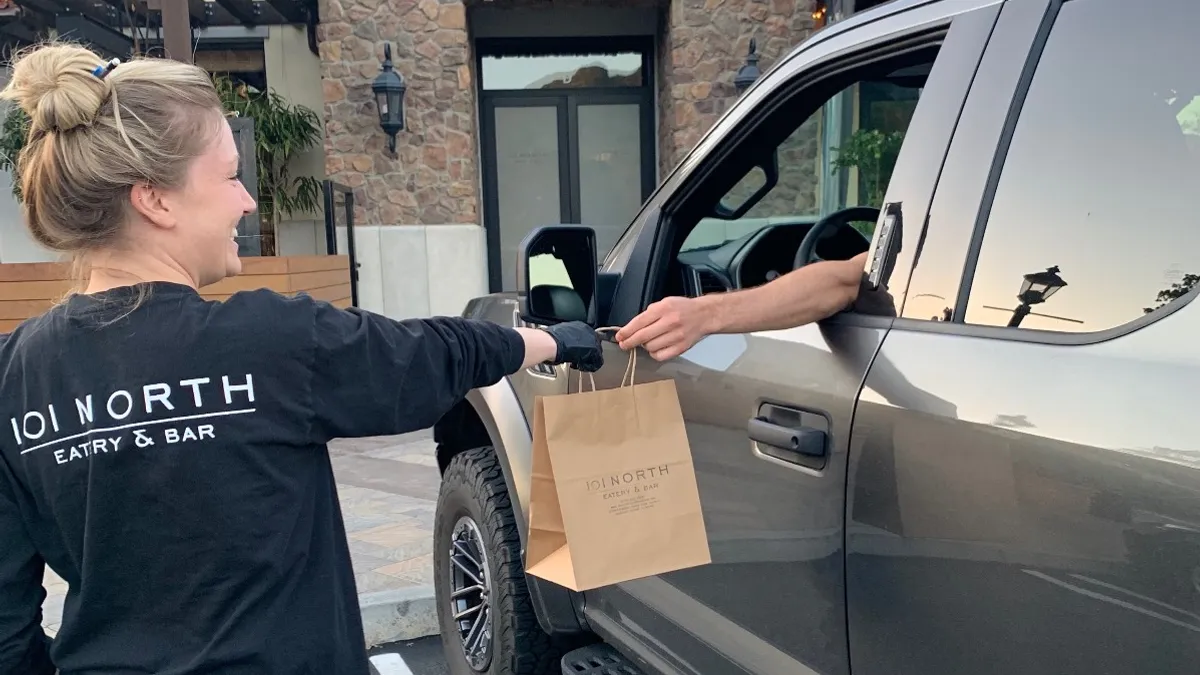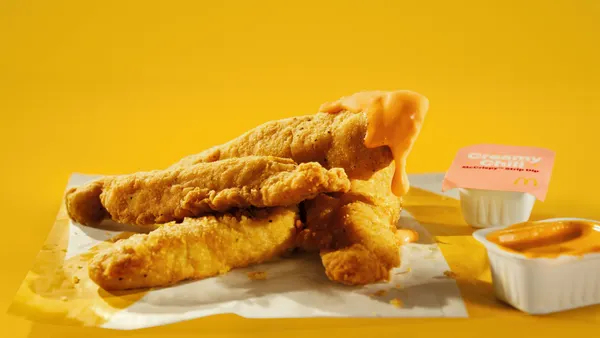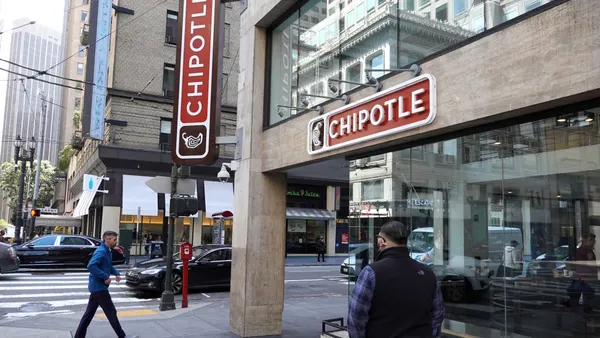Dive Brief:
- A new study from Raydiant shows that nearly 40% of restaurant operators said they would not have been able to stay in business during the COVID-19 crisis without their third-party delivery partnerships.
- About 77% of operators were offering delivery through third-party apps prior to the pandemic. Most respondents (28.8%) said those apps now make up between 21% to 30% of their sales, while about 23% of said third-party delivery now makes up 11% to 20% of sales.
- Many restaurants have criticized third-party apps for their high fees or strategies like non-partner restaurants, but the pandemic has made them more dependent on their services. Trust, however, could be tenuous. The survey shows a majority of the respondents (58%) said they trust DoorDash the most of all third-party apps, versus Grubhub (18%) and Uber Eats (17%). Seamless is the app trusted least by operators.
Dive Insight:
Despite this increasing reliance on third-party delivery apps, more than one-third of restaurants received a bad review because of an issue with a delivery app, while 21% were unsure whether a bad review was because of a mistake made by a third-party delivery company. As such, Raydiant’s report notes the paradox operators face during this crisis — restaurants and delivery apps need each other, but apps need to do more work on reputation control.
This is a critical piece, as up to 90% of consumers say they research reviews before selecting restaurants, while 55% rely on those reviews to select restaurants. A bad review now, while the industry is down, can be especially devastating and, in fact, Yelp added a disclaimer to its site asking reviewers to go easy as most operators shift to off-premise for the first time.
This loss of reputational control is hardly the only challenge restaurants have in utilizing delivery companies. Restaurants that use a third-party service will pay more (the industry standard is 15% to 30%), which can cut into already thin margins. These fees were causing some operators to move away from the apps last year, but delivery has since become table stakes for survival as dining room closures linger. Delivery orders are up significantly across the industry while overall traffic remains lower.
These habits aren’t expected to change and, in fact, more consumers seem to be accepting of having some of those fees passed onto them. A new study from Deloitte shows that 23% of consumers expect to continue ordering more delivery in a post-pandemic world, while most indicate they don’t object to paying more for delivery.
That said, 75% of those consumers expect the delivered meal to meet their expectations, which means arriving within 30 minutes. Just 20% of consumers say a 45-minute wait is acceptable. That 15-minute window shows just how much control the restaurant operator loses when the meal leaves the establishment and how risky that reputational gamble may be.
Perhaps that’s why more Raydiant respondents (35%) say curbside pickup and takeout will be a permanent change from the pandemic, compared to how many said the same about delivery (29%). Curbside and pickup enables operators to maintain more direct-to-consumer control and, perhaps, stave off negative reviews. Operators have another incentive to promote curbside and takeout channels over their delivery channels — they don’t require third-party fees and therefore drive higher margins.












